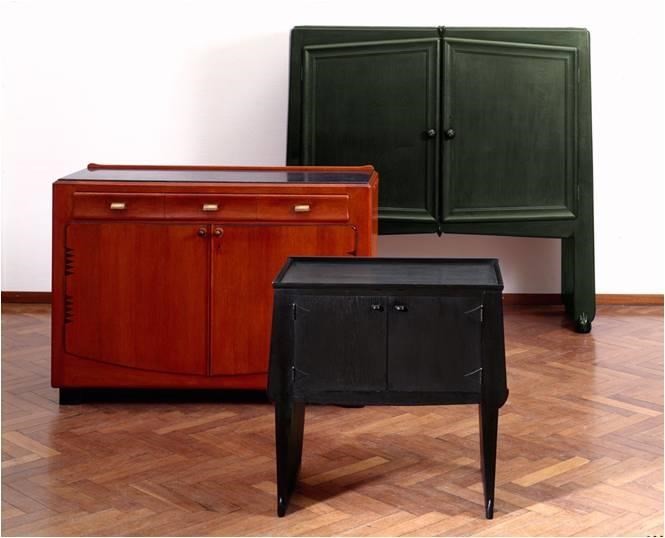Living in The Amsterdam School
09 Apr - 28 Aug 2016
LIVING IN THE AMSTERDAM SCHOOL
9 April - 28 August 2016
In 2016 the Amsterdam School will return to the Stedelijk. Immerse yourself in a spectacular survey of Amsterdam School interior design: furniture, lamps, clocks, ceramics, textiles, and graphic designs such as those for wallpaper. This survey of over 500 works includes work from designers like Jaap Gidding, Michel de Klerk, Piet Kramer, Hildo Krop, and Marie Kuyken.
The architecture of the Amsterdam School is internationally renowned. It is regarded as the highly original Dutch correlative to the lively anti-rationalist design movement in Europe between the two World Wars. With this exhibition the furniture and interiors designed by the architects, sculptors and designers of the Amsterdam School get the recognition they deserve for the first time, while revealing that the expressive furnishings functioned within an exuberant, colorful environment.
The interiors contain expressive items of furniture made from unusual wood types; these furnishings also feature strong sculptural lines and sculpted details with beautiful, distinctive fastenings or upholstery in rich, dark hues. The upholstery fabrics also bring an extremely colorful palette to the interiors with gorgeous rugs, curtains, wall hangings, lampshades, tablecloths, and daybed covers with intricate patterns in bright combinations of orange, purple, red, green, brown and/or black. Ceramics, glass designs, lamps (many with stained glass) do the same.
The current exhibition is the fruit of many years of research, and a search for objects in private hands, which are also on display. The exhibition, which contains ca. 500 objects, aims to give the furniture and “interior accessories” such as lights, clocks and hearths by the Amsterdam School the international attention their design quality deserves. It also shows how the interior design is related to the visual arts in that period (for example with the colours in Jacoba van Heemskerck’s work and the expression in the sculptures by John Rädecker and Hildo Krop).
9 April - 28 August 2016
In 2016 the Amsterdam School will return to the Stedelijk. Immerse yourself in a spectacular survey of Amsterdam School interior design: furniture, lamps, clocks, ceramics, textiles, and graphic designs such as those for wallpaper. This survey of over 500 works includes work from designers like Jaap Gidding, Michel de Klerk, Piet Kramer, Hildo Krop, and Marie Kuyken.
The architecture of the Amsterdam School is internationally renowned. It is regarded as the highly original Dutch correlative to the lively anti-rationalist design movement in Europe between the two World Wars. With this exhibition the furniture and interiors designed by the architects, sculptors and designers of the Amsterdam School get the recognition they deserve for the first time, while revealing that the expressive furnishings functioned within an exuberant, colorful environment.
The interiors contain expressive items of furniture made from unusual wood types; these furnishings also feature strong sculptural lines and sculpted details with beautiful, distinctive fastenings or upholstery in rich, dark hues. The upholstery fabrics also bring an extremely colorful palette to the interiors with gorgeous rugs, curtains, wall hangings, lampshades, tablecloths, and daybed covers with intricate patterns in bright combinations of orange, purple, red, green, brown and/or black. Ceramics, glass designs, lamps (many with stained glass) do the same.
The current exhibition is the fruit of many years of research, and a search for objects in private hands, which are also on display. The exhibition, which contains ca. 500 objects, aims to give the furniture and “interior accessories” such as lights, clocks and hearths by the Amsterdam School the international attention their design quality deserves. It also shows how the interior design is related to the visual arts in that period (for example with the colours in Jacoba van Heemskerck’s work and the expression in the sculptures by John Rädecker and Hildo Krop).

